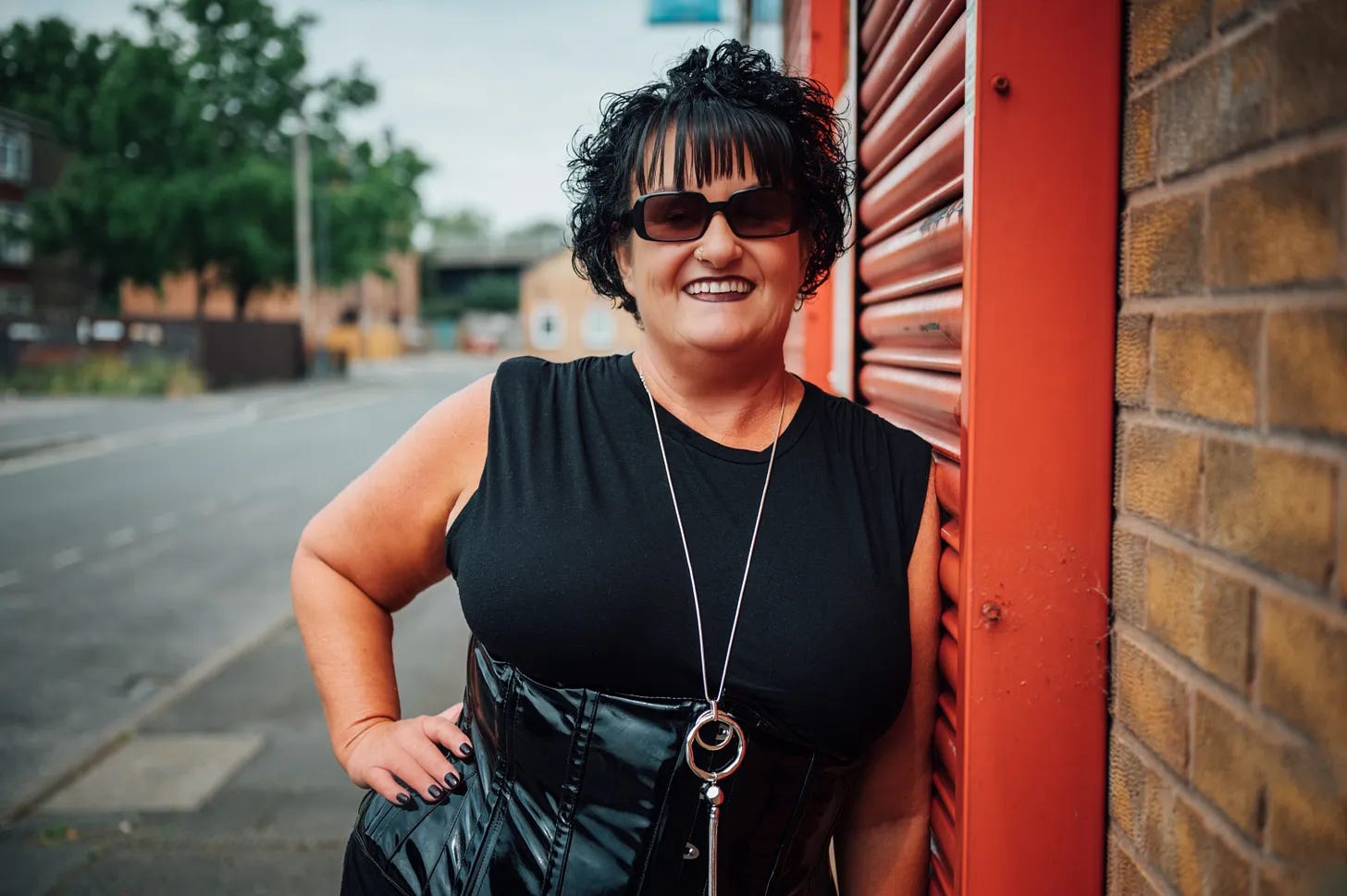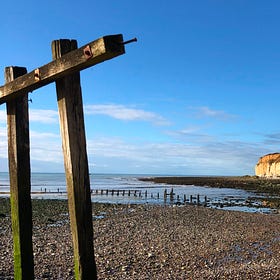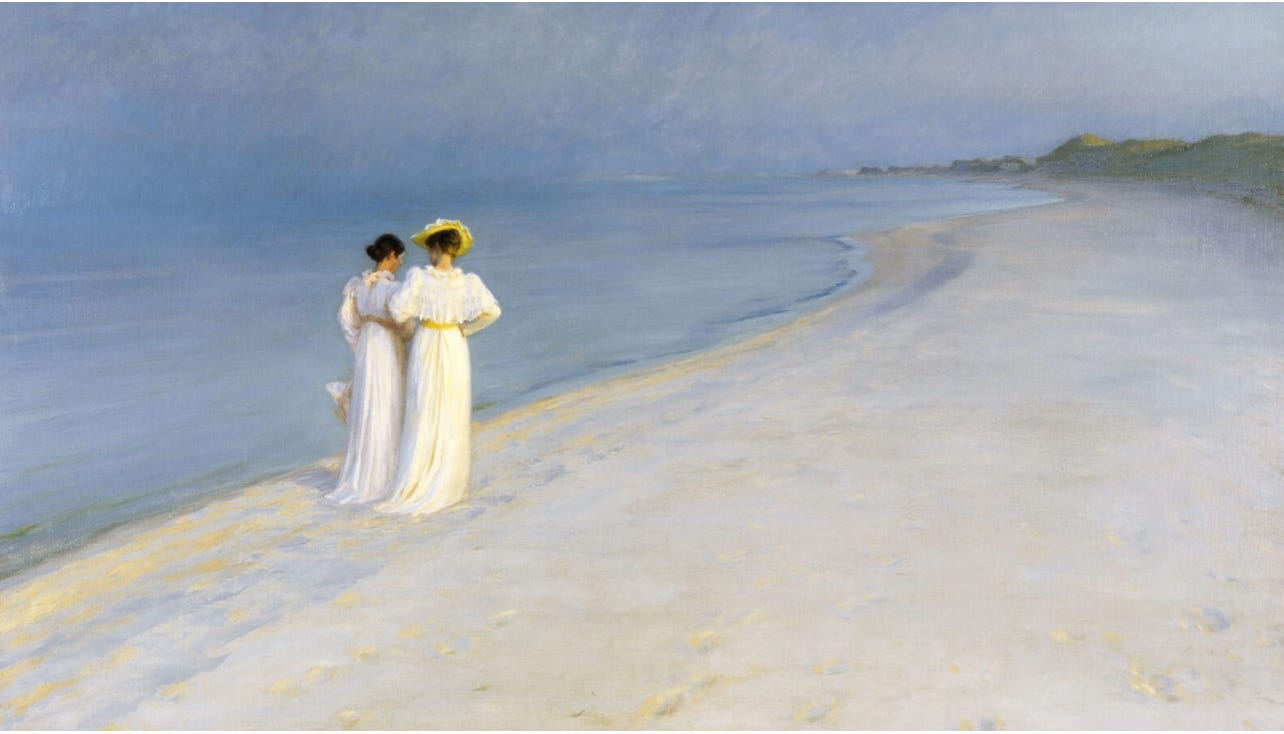Meet the Poets: Alison Tanik
Alison speaks to us about her Issue Three poem "The prophecy and the lawnmower", what got her into poetry, and the poetry and visual art which has inspired her work
What can you tell us about The Prophecy and the Lawnmower?
My poem The prophecy and the lawnmower is one of a number of poems that I’ve written about my relationships with men. The afternoon mentioned in the poem happened several years ago, but that day has remained with me ever since because it highlighted for me the difference between societal expectations regarding marriage/monogamy, and the way that I have chosen to live my life—I am openly polyamorous and bisexual. My neighbour really was obsessively mowing his lawn that day and I could really hear him, so, in this poem, I wanted to suggest the luxuriousness of (sexual) openness vis a vis the restraints or ‘straightness’ of most peoples’ lives. The idyllic English lawn and a man fixated with keeping it perfect seemed a fitting image.
The poem was incredibly difficult to craft. The idea to use the future tense came from Andrew McMillan's poem, Finally, in which he uses the future tense to hint at the repetition of relationships. So, while my poem refers to a specific day, the use of ‘will’ makes the event more universal, I hope.
I wanted to suggest the luxuriousness of (sexual) openness vis a vis the restraints or ‘straightness’ of most peoples’ lives
What poets and poems are you in dialogue with?
I am very much influenced by poets who are able to approach the subject of sex openly. This includes, of course, Kim Moore and Andrew McMillan (both tutors of mine at MMU) but also many American poets including Kim Addonizio and Olivia Gatwood.
I am extremely taken by the way that Sean Hewitt is able to approach sensuality.
Furthermore, Mancunian poet, Carson Wolfe, a classmate from MMU, has also influenced the way that I approach writing about sex—their pared-back style and honesty on the page have been majorly informative in my writing.
Finally, Bad Betty-published poet, Jemima Foxtrot, has also been influential in my work. The way that Jemima speaks about sex work, for example, is empowering.
What is your writing practice? Where and when do you write? By hand, laptop, phone notes…?
I always write hand-written notes first in erasable black ink whenever I can, and transfer it to a laptop when it seems to carry some hope. Unfortunately, I can't write poems in permanent ink, so I always make sure I have a whole pencil case full of erasable pens of all colours.
Everywhere I go I carry a pencil case, plus the latest book I’m reading, plus two A4 spiral-bound notebooks. One notebook is labelled ‘words from other poets’ (in which I jot lines, words, adjectives, similes etc that have resonated), and one is labelled, ‘drafts and ideas’. Of necessity, I have a large backpack.
Of necessity, I have a large backpack
Do you write in other forms?
I am a playwright and also a flash-fiction-writer. However, poetry is my first love, and I only dabble in other written forms when my poetry is safely ‘stashed away’ and everything I want to write is up to date.
What drew you to writing poetry?
I was in a 20-year-long abusive relationship. At night I’d put my kids to bed, with stories and fairytales and laughter, but once their doors were closed, my reality was very different. So, in 2017, I began a 6-year Open University degree (general arts) to help me through the loneliness and abuse of the evenings.
Of everything that I studied over the years at the OU, there was one single unit on creative writing, and the assignment was to write either 12 lines of poetry or a couple of pages of prose ... and I thought (in my innocence) that 12 lines of poetry was easier, and that was it! I was struck by the poetry bug... This was in 2021, and by 2022, I had left my job and I was signed up for a creative writing course at my local university (Derby). I now have a BA from Derby (first-class), an MA in poetry (distinction) from MMU, and I start my PhD in October!!
What’s your first poetry memory?
I was 12/13, and I submitted a hand-written poem to the editorial of my local newspaper about how it felt to be an adolescent. It was published. My teachers were in awe, and my classmates hated me.
What’s on your bedside table? Books etc.?
I’m currently re-reading Goodlord by Ella Frears, Eleanor among the Saints by Rachel Mann, and there is always a something by Sean Hewitt on my bedside table, too. I’m also listening to Before War—On Marriage, hierarchy, and matriarchal origins on Audible by Elisha Daeva who explains in detail about how polyamory is the natural default.
What one image do you want to send that speaks to your poem?
A reproduction of this painting by Peder Severin Krøyer, has been in various walls (sometimes bathroom, sometimes kitchen, sometimes bedroom) throughout my life. For me, it perfectly epitomises the constraints of public life, and the sensuality of private life.






